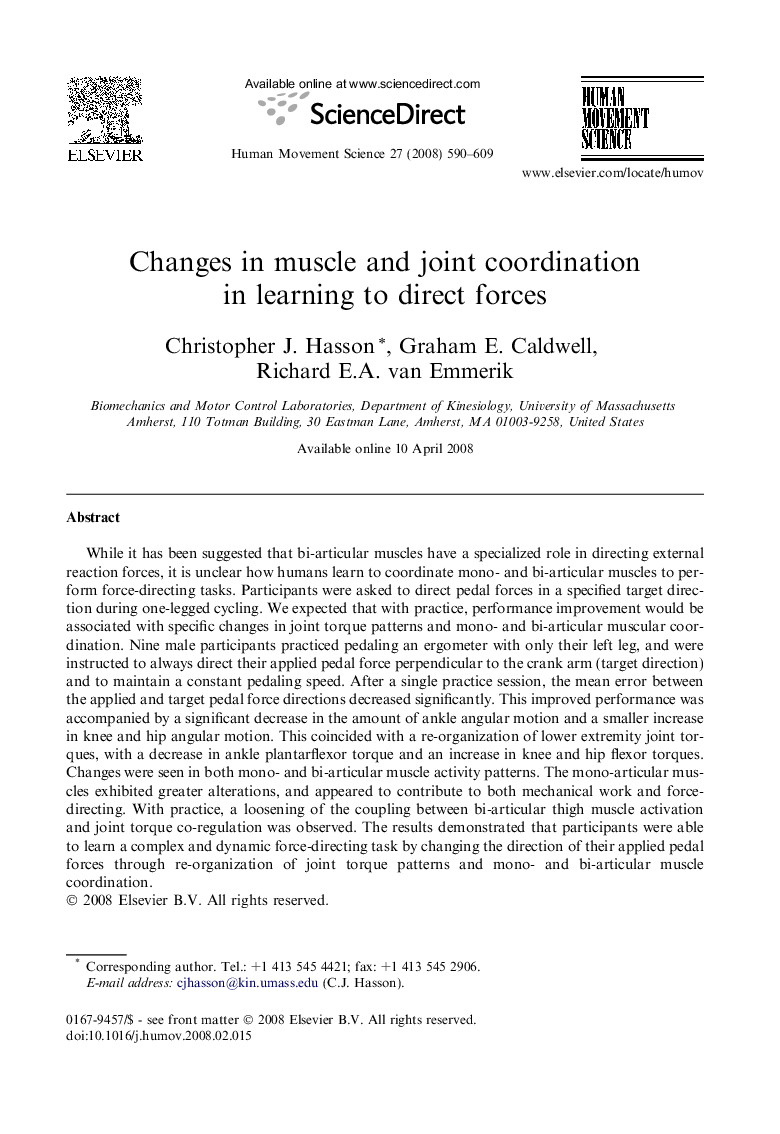| Article ID | Journal | Published Year | Pages | File Type |
|---|---|---|---|---|
| 928910 | Human Movement Science | 2008 | 20 Pages |
While it has been suggested that bi-articular muscles have a specialized role in directing external reaction forces, it is unclear how humans learn to coordinate mono- and bi-articular muscles to perform force-directing tasks. Participants were asked to direct pedal forces in a specified target direction during one-legged cycling. We expected that with practice, performance improvement would be associated with specific changes in joint torque patterns and mono- and bi-articular muscular coordination. Nine male participants practiced pedaling an ergometer with only their left leg, and were instructed to always direct their applied pedal force perpendicular to the crank arm (target direction) and to maintain a constant pedaling speed. After a single practice session, the mean error between the applied and target pedal force directions decreased significantly. This improved performance was accompanied by a significant decrease in the amount of ankle angular motion and a smaller increase in knee and hip angular motion. This coincided with a re-organization of lower extremity joint torques, with a decrease in ankle plantarflexor torque and an increase in knee and hip flexor torques. Changes were seen in both mono- and bi-articular muscle activity patterns. The mono-articular muscles exhibited greater alterations, and appeared to contribute to both mechanical work and force-directing. With practice, a loosening of the coupling between bi-articular thigh muscle activation and joint torque co-regulation was observed. The results demonstrated that participants were able to learn a complex and dynamic force-directing task by changing the direction of their applied pedal forces through re-organization of joint torque patterns and mono- and bi-articular muscle coordination.
